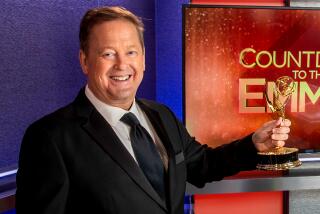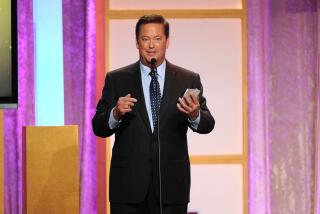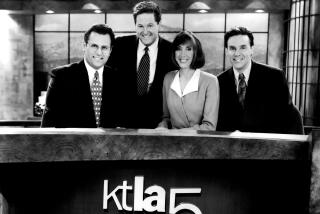Pioneering astronomer Vera Rubin dies at 88; she helped find evidence of dark matter
Reporting from PRINCETON, N.J. — As a woman, astrophysicist Vera Rubin had to fight just to get access to a telescope. What she saw when she did further rattled conventions: galaxies that were rotating more quickly than predicted by the laws of physics.
This movement, she concluded, could be explained if the universe was filled with a type of mass that no one had ever seen, mysterious stuff that came to be known as dark matter.
Her once-startling theory is now an accepted part of the still-evolving story of the universe. Finding firm evidence of dark matter stands as the seminal achievement of a scientist known for breaking barriers and helping others to build on such work.
Rubin died Sunday at 88 in the Princeton, N.J., area after a long period of declining health, according to family and colleagues. She worked for decades at the Carnegie Institution for Science, headquartered in Washington, D.C.
Although dark matter hasn’t been directly observed, scientists widely accept that it makes up about 27% of the universe. That makes it far more abundant than the normal matter that makes up the stars, planets and everything else we can observe, which total 5%. (The bulk of the universe is thought to be made of another mysterious thing called dark energy.)
The concept of dark matter, though long proposed, had limited evidence behind it in the 1970s as Rubin and colleague Kent Ford were studying the subtleties of dim light reaching Earth from distant galaxies across nearly fathomless expanses of space.
They used spectroscopy to examine how quickly galaxies revolved: The light became bluer as one side of a galaxy rotated toward them (compressing the electromagnetic waves) and redder as the other side rotated away (causing the waves to stretch out). But the outer reaches of the galaxies were turning much too fast, according to the physics of gravity. Their rotation should have been much slower if they had only the small amount of mass that they appeared to contain.
This conundrum disappeared, however, if there was much, much more mass in these galaxies, mass that did not emit light and therefore was seemingly invisible, Rubin and Ford theorized in a 1978 paper. Other scientists were reaching similar conclusions through studies of radio waves.
Rubin’s uncovering of evidence for dark matter revealed that “there’s much more out there than we would expect based on our common-sense experience,” said James Bullock, professor of physics and astronomy at UC Irvine. “Today, the standard interpretation is that 80% of matter is in this form that’s different than anything that is known to science. And without this dark matter, a lot of other things about the universe don’t make sense: Galaxies themselves wouldn’t exist; stars wouldn’t exist, and we would not exist.”
Rubin was born Vera Cooper on July 23, 1928, in Philadelphia. Her father was Pesach Kobchefski, the son of a glove maker from Vilna, Latvia, who immigrated to the United States in the early 1900s. There he became Pete Cooper and eventually an engineer at Bell Telephone, where he met Rose Applebaum, a first-generation American who gave up her career of calculating routes and costs of Bell telephone lines after their marriage.
As a child, Rubin recalled that “from my bed against a window, I had a clear view to the north sky. Soon it was more interesting to watch the stars than to sleep.”
Her father helped her build a telescope.
She attended Vassar College, where there were no male students to bar her access to the school telescope.
In the summer of 1947, she met Robert J. Rubin through their parents. He’d interrupted college to enlist in the Navy, which sent him to Cornell University for chemistry and officer training. He stayed to complete his doctorate. Robert and Vera married when he was 21 and she 19 — and already a college graduate.
Vera Rubin earned her master’s degree from Cornell and her doctorate from Georgetown University. She joined Carnegie’s department of terrestrial magnetism in Washington in 1965.
Standard practice at the time was to bar women from using the nation’s major telescopes, although one noted colleague slid in under her husband’s name. Rubin became the first to break that taboo at Palomar Observatory in San Diego County.
“I first observed at Palomar one long dark December night in 1965,” she recalled later. “My assigned bedroom was on the second floor of the dormitory, and there was a velvet rope at the first floor, blocking the stairs. When an astronomer asked why the rope was there, the answer was ‘because Vera Rubin is upstairs.’”
She also pressured a club of scientists in Washington to open its doors to women, said longtime colleague Rick Carlson, Carnegie’s director of terrestrial magnetism.
Sandra Faber, an astronomy professor emerita at UC Santa Cruz, spent a summer working with Rubin and Ford before graduate school.
“She was the first woman I encountered at that level,” said Faber, a staff astronomer at the multicampus University of California Observatories. “She helped me along at various crucial stages during my career. But each young person thinks they had the special relationship with Vera. She had that knack.”
Rubin was proud that all four of her children earned doctorates, according to Carnegie. David Rubin is a geologist. Judy Young, who died in 2014, was an astronomer. Karl Rubin is a mathematician, and Allan Rubin is a geologist. Vera Rubin’s husband, Robert, a mathematician and physicist, died in 2008.
“I think it’s no coincidence that the four children all ended up doing science,” Allan wrote in a family memoir. “A pervasive early memory of mine is of my mother and father with their work spread out along the very long dining room table, which wasn’t used for eating unless a lot of company was expected.”
Rubin was the second female astronomer elected to the National Academy of Sciences. In 1993, she received the National Medal of Science, the country’s highest scientific award.
“Don’t shoot for the stars; we already know what’s there,” Rubin said wryly in a tweet early this year. “Shoot for the space in between because that’s where the real mystery lies.”
Twitter: @howardblume
ALSO
Raymond Heacock, JPL engineer who worked on Voyager mission, dies at 88
Ed Reinecke, who resigned as California’s lieutenant governor after a perjury conviction, dies at 92
George Michael dies at 53; pop singer was half of duo Wham! before successful solo career
More to Read
Start your day right
Sign up for Essential California for the L.A. Times biggest news, features and recommendations in your inbox six days a week.
You may occasionally receive promotional content from the Los Angeles Times.







